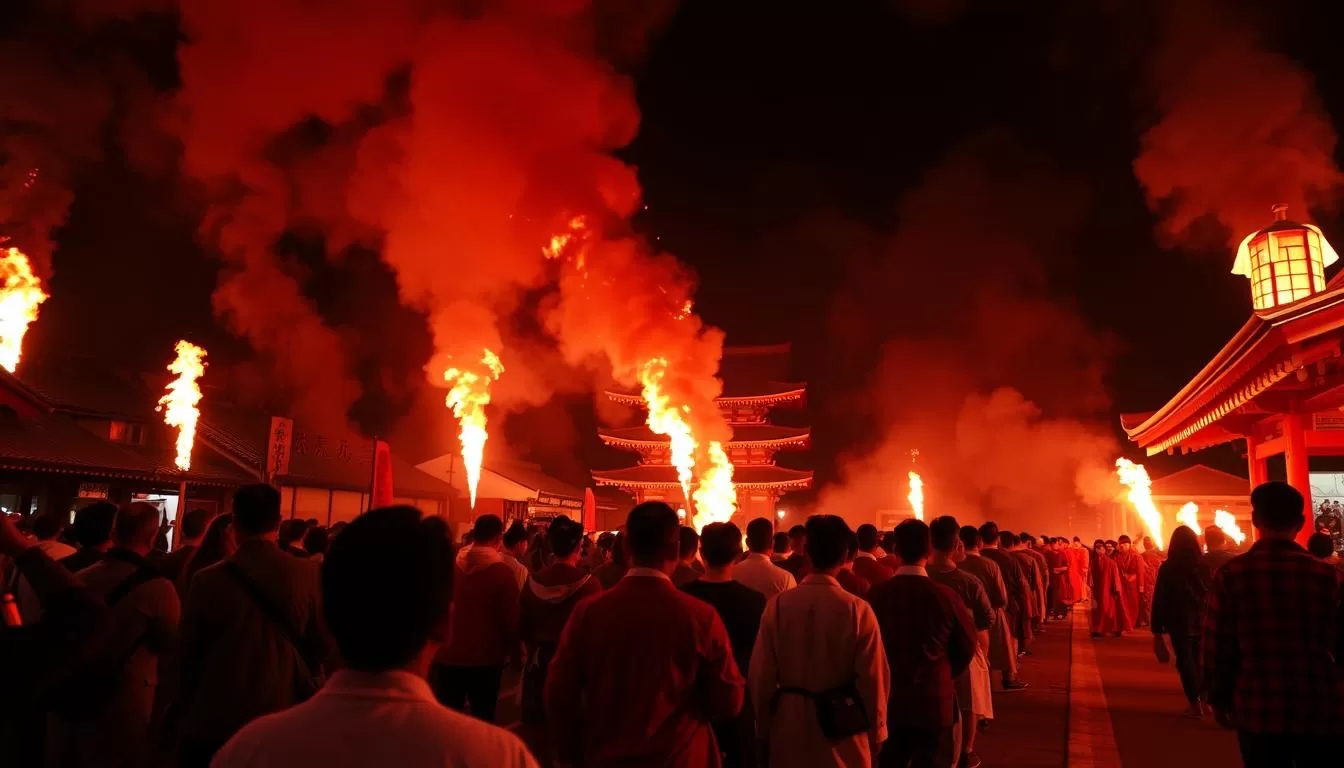✓ Accommodations ✓ Flights ✓ Rental Cars
Discover the essence of Japan’s cultural soul in Nara Prefecture, where ancient traditions and modern experiences blend seamlessly. Nara, Japan’s ancient capital, is a treasure trove of history and natural beauty, where the past whispers through the towering temples and serene gardens.
Renowned for its free-roaming deer and stunning UNESCO World Heritage Sites, Nara invites travelers to step back in time and immerse themselves in a world of cultural richness. You’re about to embark on a journey through the vibrant festival culture of Nara Prefecture, a region steeped in over 1,300 years of history and tradition.
Explore Nara’s Vibrant Festival Culture
Throughout this guide, you’ll learn about the most spectacular and culturally significant festivals that make Nara a must-visit destination for travelers seeking authentic Japanese experiences. From ancient rituals to modern celebrations, Nara’s festivals provide a perfect blend of entertainment, spiritual significance, and cultural immersion.
Nara’s festivals are not just events; they are experiences that connect you directly to the city’s rich history and cultural fabric. Whether you’re a history buff, culture enthusiast, or simply looking for unforgettable travel experiences, Nara has something to offer.
The festivals in Nara are a testament to the city’s enduring legacy as Japan’s first permanent capital. They reflect the city’s historical significance and its role in shaping the country’s cultural identity.
Nara’s Festival Highlights
Some of the key festivals and events include the Nara Lantern Festival, Omizutori, Wakakusa Yamayaki, Shuni-e Ceremony, Deer Antler Cutting Ceremony, and the Nara National Cultural Festival. Each of these events offers a unique perspective on Nara’s cultural and historical richness.
As you plan your visit to Nara, understanding the significance and timing of these festivals can enhance your experience, allowing you to participate in and appreciate the local culture fully.
The Cultural Significance of Festivals in Nara Prefecture
As you explore Nara Prefecture, you’ll discover that its festivals are more than just celebrations – they’re a bridge to the past. Nara’s festivals serve as a cultural cornerstone, connecting visitors with the region’s rich history and spiritual heritage.
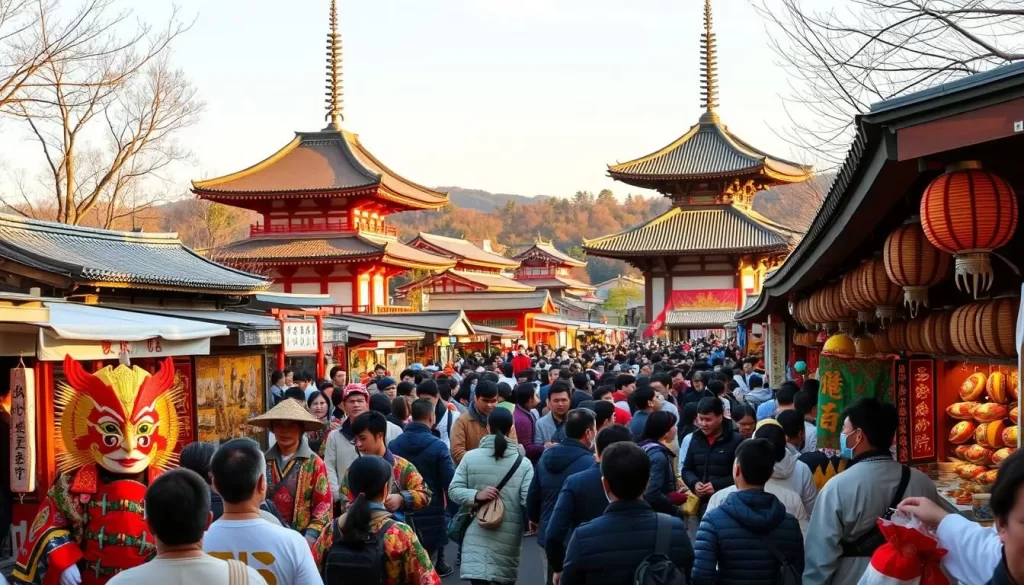
Nara’s Historical Role as Japan’s First Capital
Nara’s historical significance as Japan’s first capital is palpable in its festivals. The city was the political and cultural heart of Japan during the Nara period (710-794 CE), and this legacy continues to influence its celebrations. The festival atmosphere is imbued with a sense of reverence and tradition, reflecting Nara’s role in shaping Japan’s cultural identity.
Local legends, such as the story of the sacred deer in Nara Park, add an enchanting layer to the prefecture’s cultural tapestry. According to legend, these deer are messengers of the gods, and harming them is believed to bring bad luck. This belief has fostered a culture of respect and protection for these gentle creatures, making your experience with them even more special.
How Festivals Connect Modern Visitors to Ancient Traditions
Nara’s festivals offer a unique opportunity to witness traditions that have been passed down through generations, often unchanged for hundreds of years. By participating in or observing these festival celebrations, you’ll gain insights into Japanese spiritual beliefs, community values, and artistic expressions that textbooks simply cannot convey.
You’ll notice how these ancient celebrations have adapted to modern time while maintaining their core cultural significance and spiritual meaning. The festivals create a unique space where you can experience a direct connection to Japan’s past, allowing for a deeper understanding of the country’s cultural identity and historical development, placing Nara on the map in the world of cultural heritage.
Nara Lantern Festival: A Magical Illumination Experience

As night falls, Nara comes alive with the Lantern Festival, a breathtaking display of light and tradition. This enchanting event is a must-visit when in Nara, offering a unique experience that combines natural beauty with cultural heritage.
History and Significance of the Festival
The Nara Lantern Festival has a rich history, dating back to the illumination of sacred paths and temples. It is a celebration that honors the spiritual and cultural significance of Nara’s landmarks, particularly Kasuga Taisha Shrine and Nara Park. The festival’s origins are rooted in the tradition of lighting lanterns to guide visitors and to honor the deities.
The festival has evolved over time, now featuring over 2,000 lanterns that illuminate the night, creating a magical atmosphere. It’s a time when the community comes together, and visitors are welcomed to participate in this ancient tradition.
What to Expect: 2,000+ Lanterns Illuminating Nara Park
During the Nara Lantern Festival, Nara Park is transformed into a mesmerizing landscape of light. The 2,000+ lanterns placed throughout the park and surrounding areas create a mystical ambiance, especially around Kasuga Taisha Shrine. The soft glow of the lanterns against the backdrop of the forest and the presence of deer roaming freely make for an unforgettable experience.
You can expect to see various types of lanterns, from stone lanterns that line the paths to hanging lanterns that adorn the temples. The illumination is not just aesthetically pleasing; it’s also a way to connect with Nara’s spiritual heritage.
Best Viewing Spots and Photography Tips
For photography enthusiasts, Nara Lantern Festival is a dream come true. To capture the best moments, consider visiting the area around Kasuga Taisha Shrine, where hundreds of stone lanterns create a mystical pathway. The Ukimido Pavilion is another perfect spot for capturing lantern reflections on the water, especially during the blue hour.
For elevated views of the illuminated landscape, head to the paths near Nigatsu-do temple. To capture the subtle glow of the lanterns, bring a tripod for low-light photography. The best times for photography are during the first hour after the lanterns are lit and later in the evening when the crowds have thinned out.
Omizutori: Japan’s Oldest Buddhist Festival
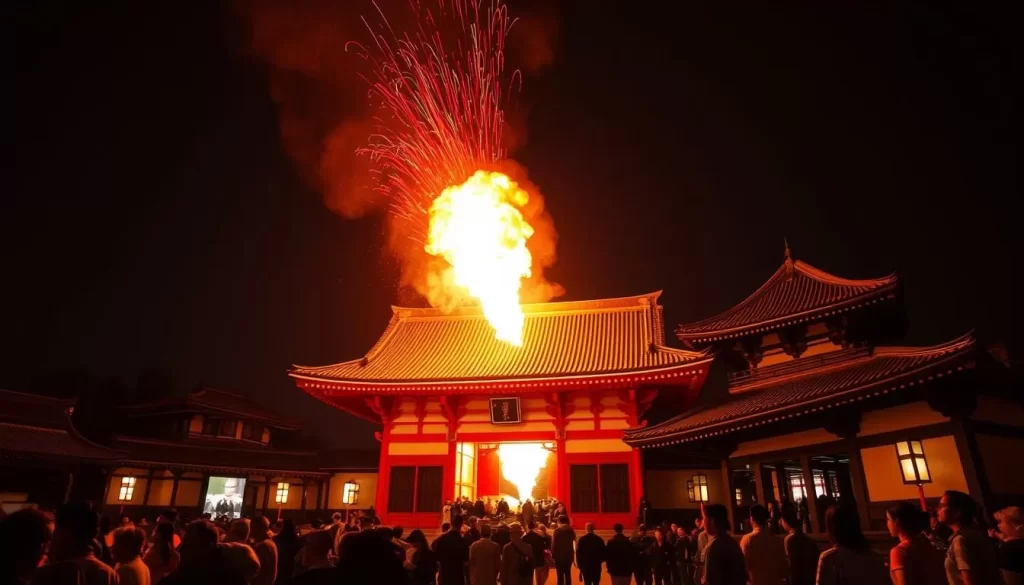
Every March, the city of Nara hosts the Omizutori festival, a profound Buddhist ceremony that has been a cornerstone of Japanese culture for centuries. This ancient ritual, held at the Nigatsu-dō temple, is a unique cultural experience that draws visitors from around the world. The festival is a testament to Nara’s rich history and its significance in Japan’s cultural landscape.
The Sacred Water-Drawing Ceremony at Nigatsu-dō
The Omizutori festival centers around the sacred water-drawing ceremony, a ritual that has been performed for over 1,200 years. This ceremony, conducted at the Nigatsu-dō temple, is believed to purify and bring good luck. On the final day of the festival, participants draw sacred water from a well, symbolizing a connection to the divine. This ancient tradition is a highlight of the festival, offering a glimpse into Japan’s spiritual heritage.
Spectacular Fire Displays and Their Meaning
One of the most striking aspects of the Omizutori festival is its spectacular fire displays. The fire rituals, known as “Dattan,” involve monks performing sacred chants and prayers while wielding large torches. These displays are not only visually stunning but also hold deep symbolic meaning, representing the purification of the mind and the warding off of evil spirits. The fire displays are a climax of the festival, creating an unforgettable experience for attendees.
When to Visit and What to Experience
To fully immerse yourself in the Omizutori festival, plan your trip for early to mid-March. The most spectacular fire displays occur from March 12-14, with the main event on March 12 at around 7:00 PM. Arriving several hours early is advisable to secure a good viewing position. Depending on the day you visit, you’ll experience different aspects of the ceremony, from smaller fire rituals to the grand finale of the water-drawing ceremony. For the best adventure, consider staying multiple days to witness the various facets of this two-week-long festival.
Visiting the Omizutori festival is a once-in-a-lifetime experience that combines spirituality, culture, and natural beauty. Whether you’re drawn to the nighttime fire ceremonies or the more intimate daytime rituals, this festival promises to be a memorable part of your trip to Nara.
Wakakusa Yamayaki: The Mountain Burning Festival
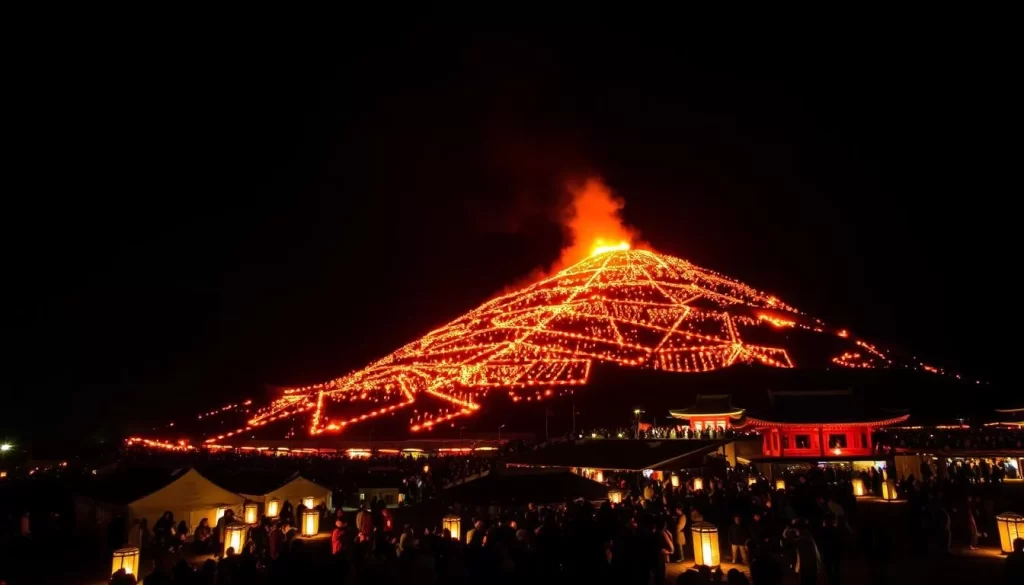
Every January, Nara’s Wakakusa Yamayaki festival lights up the night with a breathtaking display of fire and tradition. This unique event is a cherished part of Nara’s cultural calendar, attracting visitors from far and wide.
Origins and Legends Behind the Hillside Burning
The Wakakusa Yamayaki festival has its roots in a legend dating back to the 6th century. According to historical accounts, the festival originated as a gesture of friendship between two rival temple factions, signaling a truce by burning grass on Wakakusa Hill. Over time, this act evolved into the spectacular event we see today, symbolizing the renewal and the enduring spirit of Nara’s cultural heritage.
The Spectacular Night of Fire and Fireworks
The highlight of the Wakakusa Yamayaki festival is undoubtedly the night of fire and fireworks. As the sun sets, the hillside is set ablaze, creating a dramatic display against the evening sky. This is accompanied by a fireworks display, adding to the festive atmosphere. For the best experience, head to the scenic slopes and hills within Nara Park, which offer stunning views and are perfect for observing the deer in their natural habitat.
Viewing Locations and Festival Schedule
To make the most of your trip to Wakakusa Yamayaki, consider the following viewing locations and schedule:
- You’ll find the best viewing spots at Nara Park, the area around Todai-ji Temple, and Kasuga Taisha Shrine, all offering excellent vantage points of the burning mountain.
- For a less crowded experience, seek out spots along the eastern side of the park, which still provide good views but attract fewer tourists.
- The festival typically takes place on the fourth Saturday of January, with activities beginning in the afternoon and the mountain burning starting after sunset (around 6:00 PM).
- Arrive early (by mid-afternoon) to secure a good spot and enjoy the various food stalls and cultural performances that precede the main event.
- In case of rain or strong winds, the festival may be postponed to the following day, so keep your travel plans flexible.
Shuni-e Ceremony at Tōdai-ji Temple
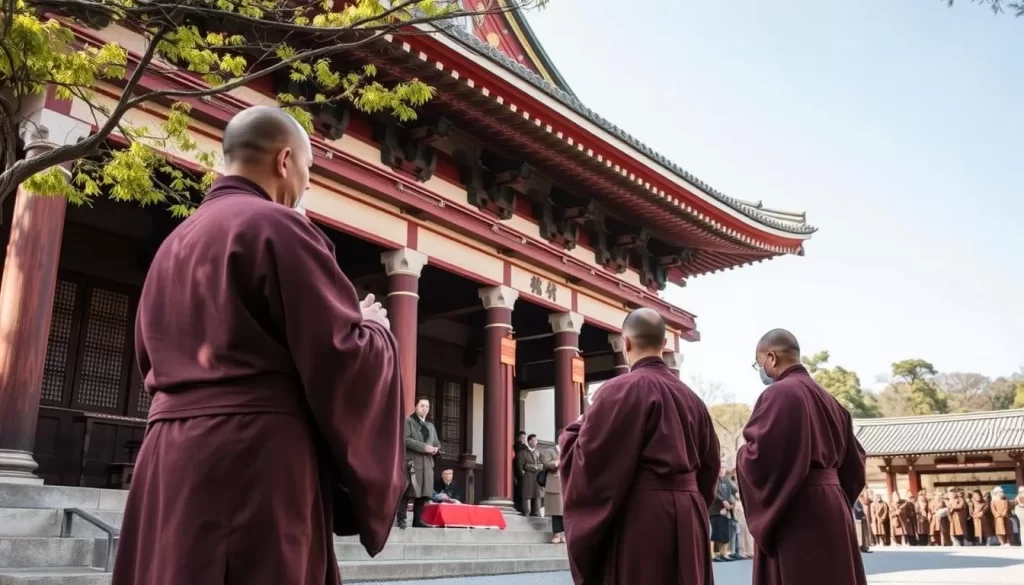
At the iconic Tōdai-ji Temple, the Shuni-e ceremony is a profound experience that connects visitors with ancient traditions. This sacred ritual, held annually, is a highlight of Nara’s cultural calendar, drawing visitors from around the world to witness its timeless beauty.
Ancient Rituals in Japan’s Largest Wooden Temple
The Shuni-e ceremony takes place within the majestic grounds of Tōdai-ji Temple, a place steeped in history and spirituality. As you explore the temple grounds, you’ll be surrounded by the serene atmosphere that pervades this sacred site. The ceremony itself involves intricate rituals performed by monks in traditional robes, creating an otherworldly experience that transports you to a different era.
You’ll have the opportunity to witness monks chanting sutras and engaging in meditative practices that have remained largely unchanged for centuries, offering a glimpse into Japan’s rich cultural heritage.
Participating in the Ceremony as a Visitor
As a visitor, you can observe parts of the Shuni-e ceremony, although some rituals remain closed to the public to preserve their sacred nature. The ceremony spans multiple days, allowing you to experience different aspects depending on the day you visit. While photography may be restricted during certain rituals, you’ll find ample opportunities to document your experience in the temple grounds before and after the ceremony, making it a memorable part of your adventure.
The contemplative atmosphere of the Shuni-e ceremony invites you to slow down and appreciate the spiritual dimension of Japanese culture, enriching your overall experience in Nara.
Deer Antler Cutting Ceremony (Shika no Tsunokiri)
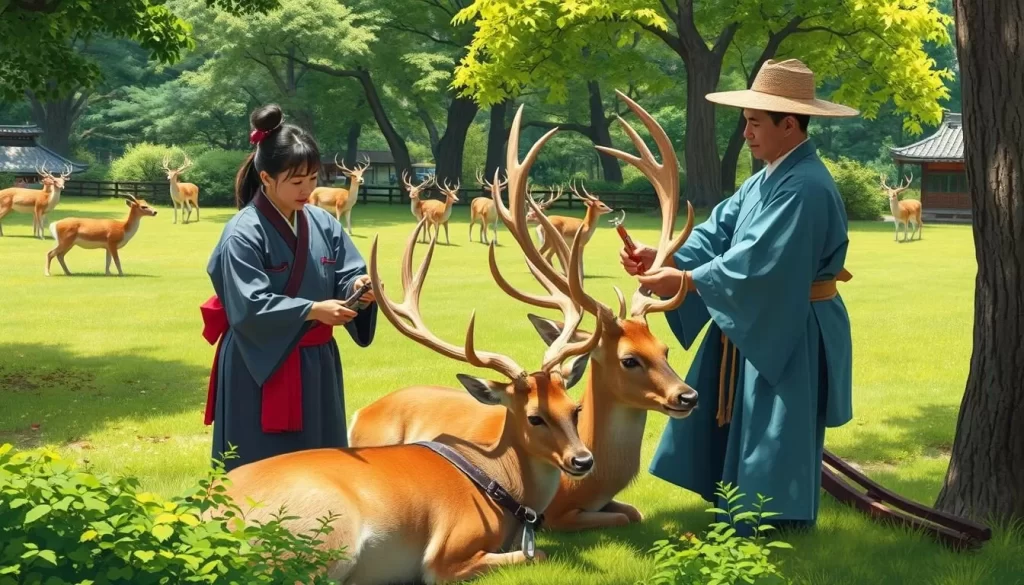
As part of Nara’s cultural heritage, the Deer Antler Cutting Ceremony is an experience not to be missed. This unique event, typically held in October, is a significant tradition that highlights the city’s deep connection with its sacred deer.
Protecting Nara’s Sacred Deer Through Tradition
The Deer Antler Cutting Ceremony is not just a spectacle; it’s a vital practice that ensures the wellbeing of Nara’s deer population. By trimming the antlers of male deer, the ceremony prevents injuries among the deer and between deer and visitors in Nara Park. The event begins with a Shinto ritual, asking for forgiveness from the gods for the procedure, underscoring the spiritual significance of these animals.
Witnessing This Unique Cultural Practice
When you witness the Deer Antler Cutting Ceremony, you’ll see the careful process by which skilled veterinarians and local officials trim the antlers. The deer are respectfully captured, calmed, and then released after the procedure, which is performed with great care for their wellbeing. After the ceremony, you can spend the day observing the freshly trimmed deer, enjoying a unique experience that brings you closer to Nara’s cherished deer.
Nara National Cultural Festival
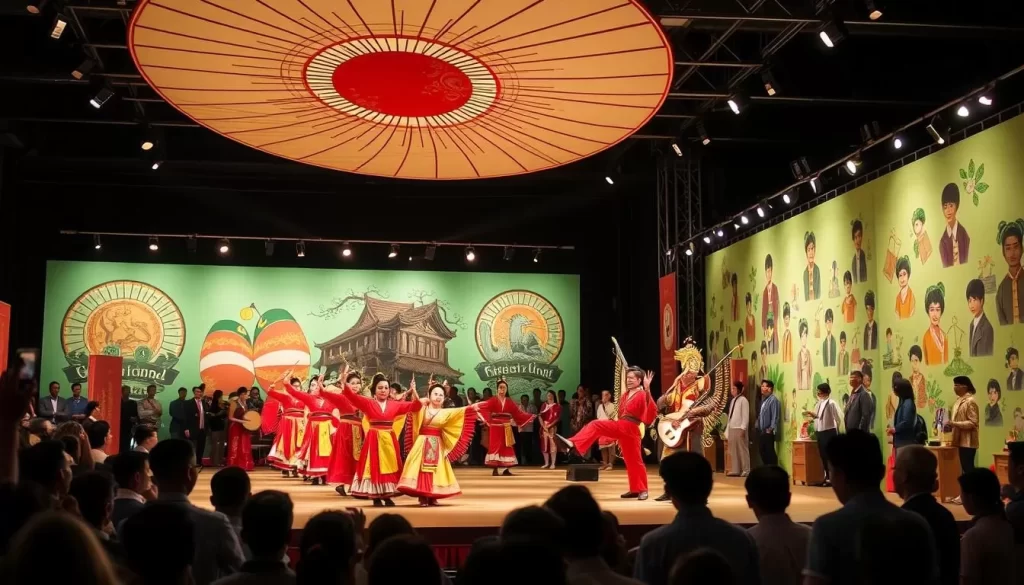
Immerse yourself in Nara’s rich cultural tapestry at the Nara National Cultural Festival, where tradition meets contemporary flair. This vibrant celebration is a fantastic way to engage with the local community while enjoying the region’s delicious food and captivating performances.
Celebrating Contemporary Arts and Traditional Culture
The Nara National Cultural Festival is a testament to Nara’s enduring cultural legacy. You’ll be treated to a diverse program of performances, ranging from traditional music and dance to contemporary theater and art installations. The festival’s exhibitions showcase both historical treasures and works by modern artists, offering a comprehensive view of Japanese artistic expression across the centuries.
Performances, Exhibitions, and Culinary Experiences
As you explore the festival, you’ll delight in the culinary aspect, with food stalls and special restaurant menus showcasing Nara’s local specialties and seasonal ingredients. The event is designed to provide a memorable experience for visitors, with interactive workshops allowing you to try your hand at traditional crafts and arts. Each day of the festival offers different events and activities, making it worthwhile to check the schedule and plan multiple visits if your travel itinerary allows. Whether you’re looking for a cultural adventure or simply want to enjoy the festive atmosphere, the Nara National Cultural Festival has something for everyone.
Seasonal Celebrations Throughout the Year
As the seasons change, Nara comes alive with vibrant festivals and events that showcase its history and traditions. Visitors can experience the rich cultural heritage of Nara by participating in its various seasonal celebrations.
Spring Festivals and Cherry Blossom Events
Spring is a beautiful time to visit Nara, with the cherry blossoms blooming in late March to early April. The Hanami (cherry blossom viewing) is a cherished tradition, where locals and tourists alike gather under the blooming trees to admire their beauty and enjoy traditional foods. For those looking to avoid crowds, consider visiting during weekdays or early mornings. This allows for a more leisurely experience and better photography opportunities.
Some popular spring festivals include the Nara Cherry Blossom Festival, which features stunning displays of cherry blossoms at various locations throughout the city, including Nara Park and the Kasuga Taisha Shrine.
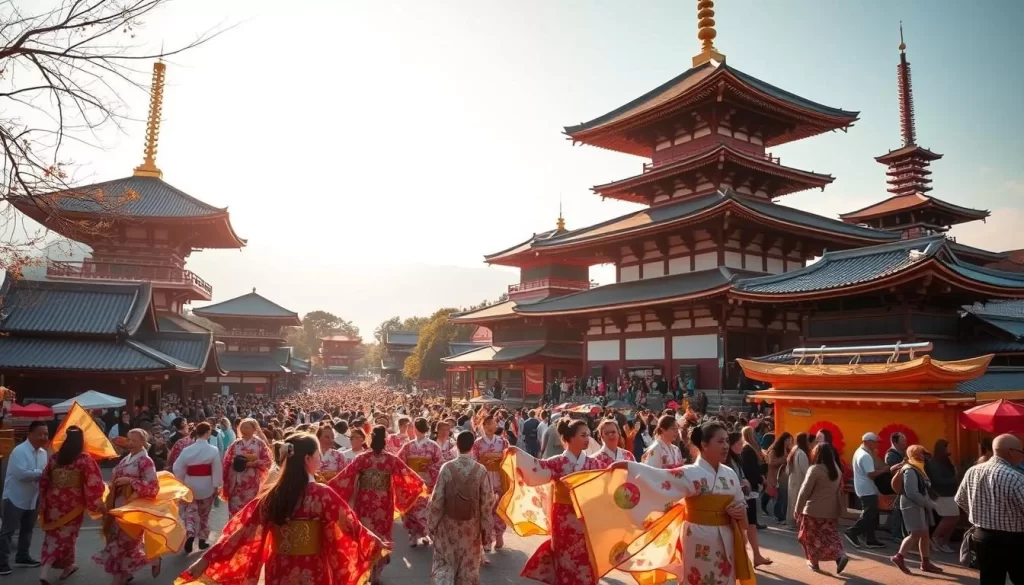
Summer Festivals and Traditional Dance Performances
Summer in Nara is marked by vibrant festivals and traditional dance performances. One of the highlights is the Nara Traditional Dance Performance, which takes place in August. This event showcases traditional Japanese dance, accompanied by live music, adding to the festive atmosphere. Visitors can also enjoy the Nara Lantern Festival in the evenings, although it’s more commonly associated with other times of the year, some lantern displays extend into the summer, creating a serene ambiance.
| Season | Festival/Event | Description |
|---|---|---|
| Spring | Nara Cherry Blossom Festival | Celebration of cherry blossoms with food stalls and traditional performances. |
| Summer | Nara Traditional Dance Performance | Traditional Japanese dance performances accompanied by live music. |
Autumn and Winter Celebrations in Nara
Autumn brings its own set of festivities, including the Shika no Tsunokiri (deer antler cutting ceremony) in October, ensuring the safety of both deer and visitors during winter. You’ll be mesmerized by Nara’s autumn festivals that celebrate the changing leaves, including special illuminations at temples and shrines. Winter is also a great time to visit, with events like the Kasuga Taisha Shrine’s Setsubun Mantoro in February, featuring thousands of lanterns illuminating the winter landscape. The dramatic Wakakusa Yamayaki (mountain burning festival) in January is another highlight, where an entire mountainside is set ablaze in a spectacular fire display.
Planning Your Visit Around Nara’s Festival Calendar
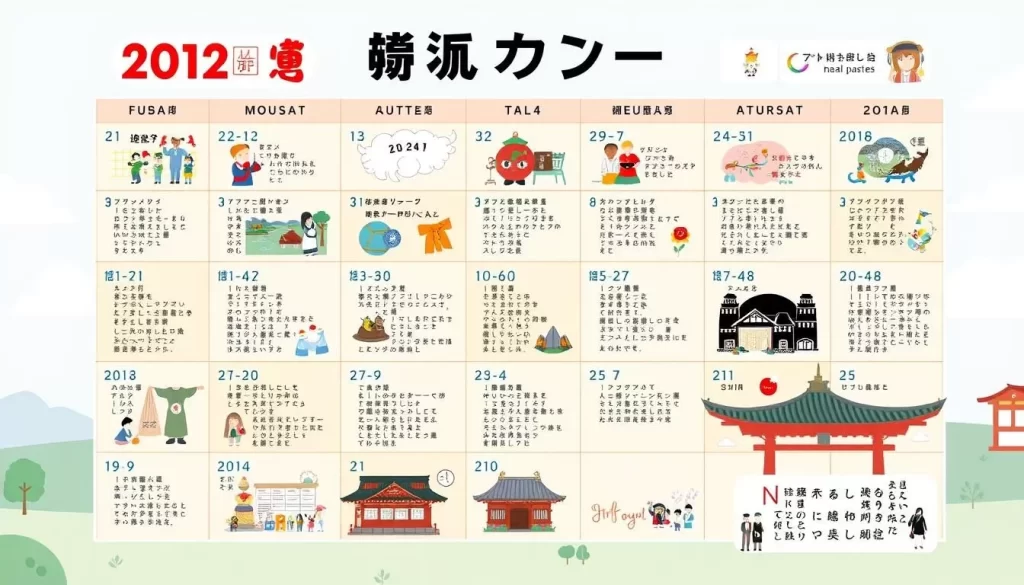
Planning your trip around Nara’s festivals can be a great way to experience the city’s unique traditions. Nara is home to a selection of UNESCO World Heritage Sites, stunning parks, and serene shrines that are sure to leave you in awe.
Best Times of Year to Experience Multiple Festivals
Nara hosts various festivals throughout the year, with some seasons offering multiple events. Spring is a great time to visit, with festivals like the Nara Lantern Festival and cherry blossom events. Autumn is another peak season, with the Wakakusa Yamayaki mountain burning festival taking place.
By planning your visit during these times, you can experience multiple festivals and make the most of your trip.
Combining Festival Visits with Nara’s Major Attractions
Most festivals in Nara take place near the city’s major attractions, making it easy to combine cultural events with visits to sites like the Great Buddha at Todai-ji Temple, a UNESCO World Heritage Site. Many of Nara’s eight UNESCO World Heritage sites serve as venues for festival activities, allowing you to experience these historic locations in their most vibrant and authentic contexts.
You can create efficient itineraries that include morning visits to attractions like Kasuga Taisha Shrine and afternoon participation in nearby festival events. The layout of central Nara makes it possible to see multiple attractions and attend festival activities in a single day, as many sites are within walking distance of each other. Don’t forget to include time for interacting with Nara’s famous deer, which roam freely throughout the park and often become part of the festival atmosphere.
Practical Information for Festival Goers
As you plan to attend Nara’s vibrant festivals, it’s essential to be prepared with practical information to make the most of your experience.
Transportation Options to and Around Nara During Festivals
Nara is well-connected by train, and the closest major train station is in Kyoto or Osaka. From there, you can take a local train or bus directly to Nara. During festivals, additional buses and trains may be operated, so it’s a good idea to check the schedules in advance. Once in Nara, walking is a great way to get around, as many festival venues are within walking distance of each other.
| Transportation Mode | From | To | Approximate Time |
|---|---|---|---|
| Train | Kyoto | Nara | 1 hour |
| Bus | Osaka | Nara | 1.5 hours |
Accommodation Tips During Peak Festival Periods
Booking your accommodation well in advance is crucial during peak festival times. Nara offers a range of options from traditional ryokans to modern hotels. Consider staying in or near Nara Park for easy access to many festival locations. Be sure to check the festival calendar to plan your visit accordingly, as times can get busy.
What to Wear and Bring to Nara Festivals
When attending Nara’s festivals, dressing comfortably is key, as you’ll likely be on your feet for extended periods. Consider the weather and dress in layers, as temperatures can fluctuate between day and night. Don’t forget to bring essentials like water to stay hydrated, snacks, and a portable charger for your phone. For fire festivals, consider bringing a scarf or mask to protect against smoke. It’s also a good idea to pack a few things like hand sanitizer, tissues, and a small towel (tenugui), which are commonly used at crowded events in Japan.
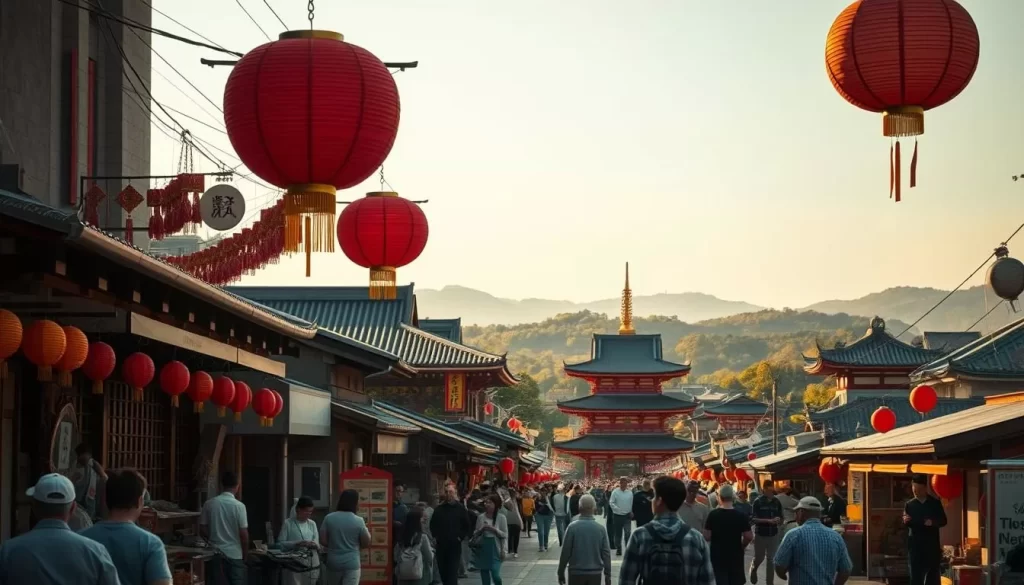
By being prepared with the right attire and essentials, you’ll be able to enjoy the festivals without any hassle, making your visit to Nara a memorable one.
Experiencing Local Cuisine During Festival Seasons
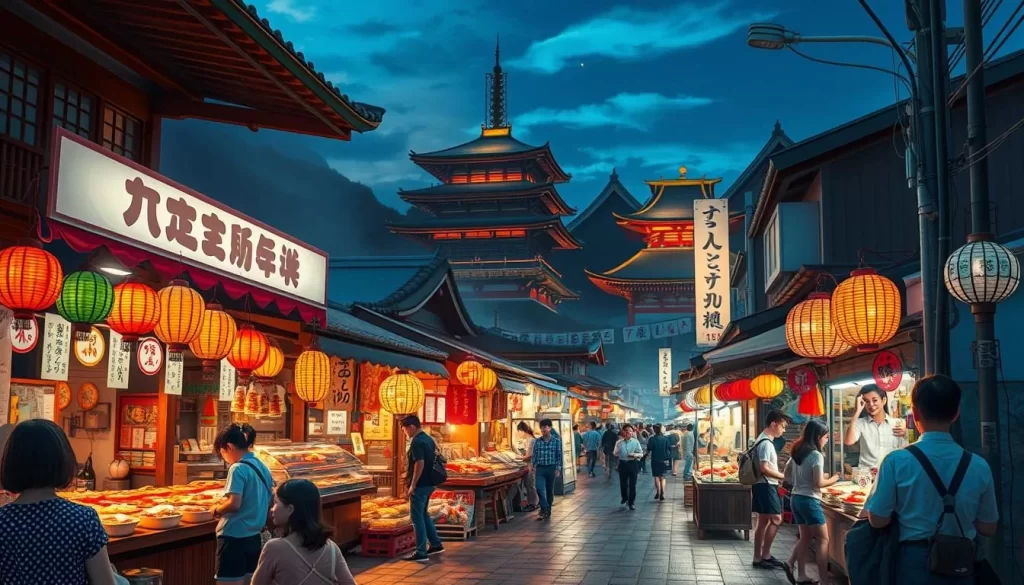
As you immerse yourself in Nara’s vibrant festivals, be sure to indulge in the local cuisine that complements the celebrations. The city’s culinary delights are an integral part of the festival experience, offering a range of traditional dishes that are both flavorful and culturally significant.
Festival Food Stalls and Specialties
Nara’s festival food stalls are a treat for visitors, offering a variety of local specialties. One must-try is yaki-dofu, grilled tofu that’s crispy on the outside and soft on the inside, often served with a sweet soy sauce. You can enhance this experience by pairing it with a warm cup of matcha, a traditional Japanese green tea.
The food stalls near Nara Park and other festival locations offer a range of local flavors, making it easy to grab a bite between activities. Be sure to explore the different stalls to discover the unique tastes of Nara.
Traditional Restaurants to Try During Your Festival Visit
For a more leisurely dining experience, Nara is home to many traditional restaurants that offer special festival menus. These restaurants serve local dishes such as yaki-dofu, which pairs perfectly with a cup of local green tea. You’ll also find traditional tea houses near Nara Park that offer a serene setting to enjoy matcha tea and wagashi (Japanese sweets).
Many of these historic restaurants have been serving visitors for generations, providing an authentic dining experience that connects you to Nara’s culinary heritage. Look for restaurants that offer views of the festival activities, allowing you to enjoy local cuisine while watching the celebrations unfold.
Conclusion: Embracing the Spirit of Nara Through Its Festivals
Nara’s festivals offer a unique lens through which to view Japan’s soul, from ancient Buddhist ceremonies to spectacular fire celebrations. As you’ve discovered, these events allow you to experience Nara’s rich history in a living, dynamic way, bringing the past to life around iconic attractions like the Great Buddha, standing 15 meters tall in the world’s largest wooden structure.
Timing your visit to coincide with these festivals enhances your appreciation of Nara’s World Heritage sites, creating memories that last a lifetime. The sacred deer of Nara, believed to be messengers of the gods, add another layer of magic to festival experiences, creating uniquely Japanese moments.
This guide has equipped you with practical information about transportation, accommodation, and food, along with cultural insights that will help you make the most of your festival adventures in this historic prefecture. Whether you’re drawn to the spiritual atmosphere of ancient rituals or the joy of experiencing Japanese traditions firsthand, Nara’s festivals offer something special for every traveler.
By participating in these celebrations, you’re not just observing Japanese culture – you’re becoming part of a living tradition that connects you to the things that make Nara truly special. With so much to see and do, Nara truly offers an enchanting experience that will linger in your heart long after you’ve left. So pack your bags, grab your camera, and get ready for an unforgettable adventure in this incredible city.
The above is subject to change.
Check back often to TRAVEL.COM for the latest travel tips and deals.
